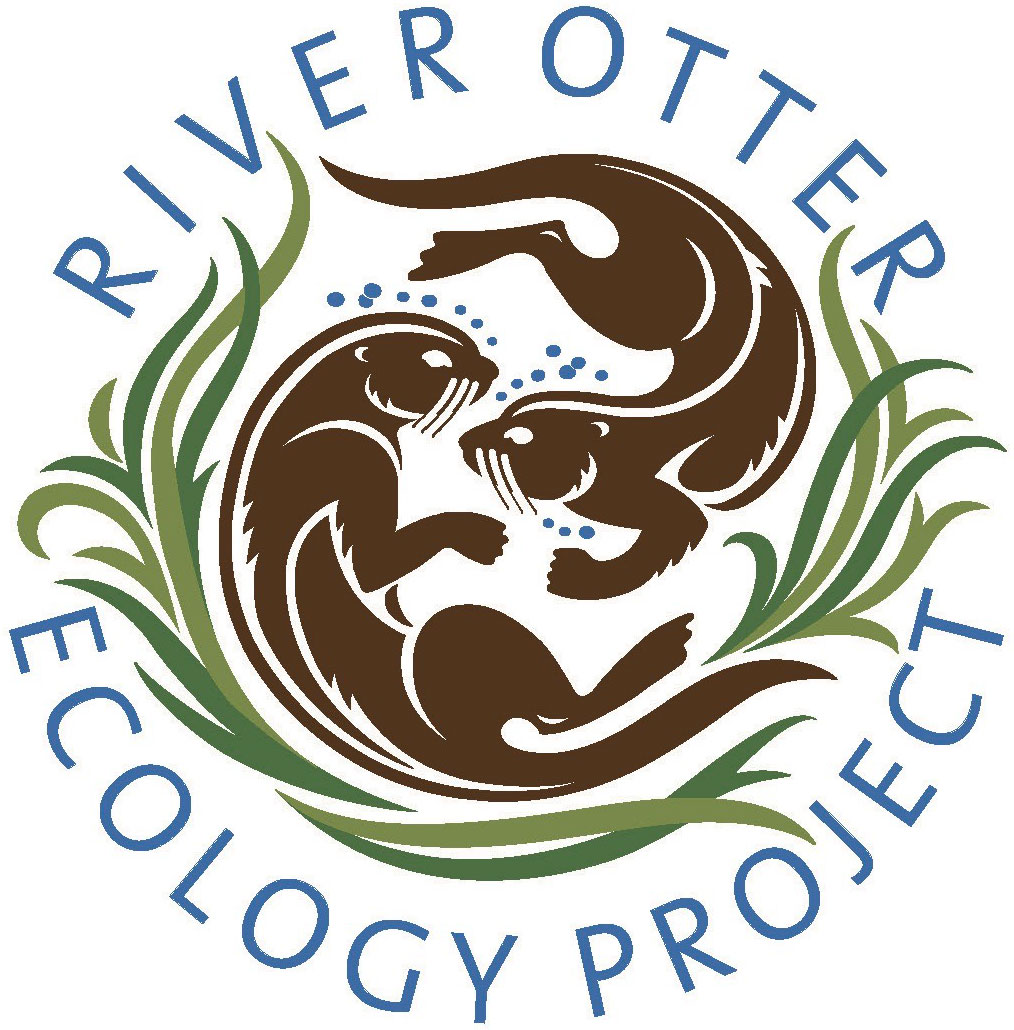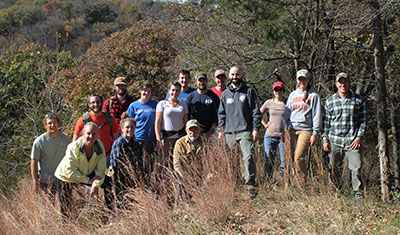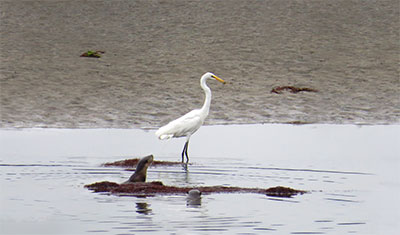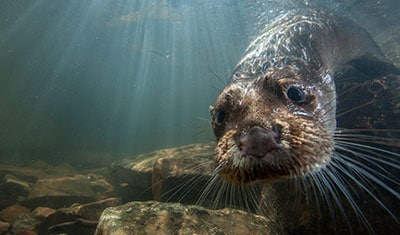How We Study River Otters
Healthy Watersheds Make Healthy Ottersheds!
How do we study River Otters?
We look for signs of otters near all kinds of water, including ponds and streams, rivers, lakes, bays and even ocean! Signs we look for include tracks, otter scat (poop) and otter jelly, which is a clear, jelly-like stuff they sometimes leave instead.
We also look for slides and wallows; places where otters have slid down sand dunes or down grassy banks, or rolled around in the sand or dirt. Once we find a place with lots of scat and tracks, we know where to put our cameras.
We put up motion-activated, infrared trail cameras to capture video of them. Videos can help us see how many otters, how many otter pups, and how they behave.
Click here to see some of our videos!
We collect scat
Otter scat and jelly (a clear, viscous substance) can tell us what river otters eat at different times of year. It can also give us genetic information about relationships among the otters we study.
We put all the information and videos into our computers. We use mapping and databases to put all our field and laboratory information together.
Why Study River Otters?
River Otters are an apex predator, and can affect and are affected by conditions in every watershed. Their presence and health can give us important information about the health of the whole watershed, from headwaters to coast. Our research will help us know better how to protect and conserve watersheds for the otters and for other plants and animals, including us!
The River Otter Ecology Project is a registered 501 (c)(3) EIN #45-4997526 non-profit organization dedicated to the welfare of river otters and our watershed. We receive no government funding, and depend solely on financial support from our friends. Our organization is not affiliated with any other otter-related research group or community outreach organization.
© 2017 River Otter Ecology Project
Contact
River Otter Ecology Project
PO Box 103
Forest Knolls, CA 94933
[email protected]




